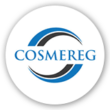Key Developments in EU and UK Regulations: Early 2023 Updates
1. Recent Developments in Chemical Regulations
In recent years, there has been growing scrutiny on the use and impact of chemicals in various aspects of modern life, with regulators and policymakers recognizing the role of innovative chemistry in addressing environmental challenges. The European Commission has been implementing its Chemicals Strategy for Sustainability (CSS) as part of the European Green Deal, focusing on revising regulations such as REACH and introducing hazard classes for specific substances. The UK, as an independent entity, is adapting its environmental regulations and extending the deadlines for UK REACH (Registration, Evaluation, Authorization, and Restriction of Chemicals).
In early 2023, a significant REACH restriction proposal is expected to target per- and polyfluoroalkyl substances (PFAS), which could impact over 4,000 PFAS. The criteria for “essential use,” which will be a crucial aspect of future chemical regulation, may be influenced by determinations made in the context of PFAS. Towards the end of 2023, proposals to revise REACH and improve access to chemical data for safety assessments are expected to facilitate the goal of “one substance, one assessment.”
The UK REACH work program for 2022-2023 identifies five priorities: PFAS, intentionally added microplastics, formaldehyde and formaldehyde releasers in articles, bisphenols in thermal paper, and hazardous flame retardants. These priorities involve regulatory management options analysis (RMOA), evidence projects, and reviewing/updating existing evidence on environmental risks.
2. Lilial Ingredient Ban Enforced in the UK
With effect from December 15, 2022, the sale of cosmetics containing the perfume allergen lilial (Butylphenyl methylpropional) has been prohibited in the United Kingdom. The ban aligns with the regulations already in place in the European Union (EU) and Northern Ireland since March 1, 2022. The deadline for making such products available on the market was October 15, 2022.
3. Food Safety and Packaging Regulations
In the food industry, there have been significant developments in food safety and packaging regulations. The EU has introduced a new regulation on recycled plastic food contact materials and established a register for technologies and recyclers. In the UK, extended producer responsibility rules now place the entire cost of recycling packaging on producers, resulting in increased compliance costs. Both the EU and the UK are implementing bans on single-use plastics, although the scope and timing differ between the two regions.
Companies involved in food contact applications need to stay updated on the evolving regulations in both the EU and the UK. Considerations include the materials used, whether they are virgin or recycled, and the specific requirements of each market. Overall, there is a strong focus on sustainability and reducing environmental impacts in the chemicals and food packaging sectors.
4. CMR Classification for Titanium Dioxide Reversed
In the European Union, titanium dioxide (TiO2) in certain powdered forms is no longer classified as a carcinogenic compound when inhaled. The CMR 2 classification, which applied to mixtures containing 1% or more titanium dioxide in powder form with an aerodynamic diameter of ≤ 10 µm, has been canceled. This change follows a recent decision by the European Court of Justice, and the full implications of this decision are yet to be determined.
5. SCCS’s Final Opinion on Triclocarban and Triclosan
In November 2022, the Scientific Committee on Consumer Safety (SCCS) published its final opinion on triclocarban and triclosan, substances potentially exhibiting endocrine-disrupting properties in cosmetics. The SCCS determined that triclocarban is safe up to a maximum concentration of 2% as a preservative in dermally applied cosmetic products for children and adults. It is also considered safe up to 1.5% in rinse-off products. However, triclocarban is not safe at a concentration of 0.2% in mouthwash for adults and children, and in toothpaste for children below 6 years old. The safety assessment did not cover exposure through wipes or babies.
As a preservative in toothpaste, it is safe at 2-3% for adults and children but not when used in combinations for children below 3 years old. For mouthwash, triclosan is safe at 2% for adults but not when used in combination, and it is not safe at 0.2% for children and adolescents, even when used individually.
6. Draft SCCS Opinion on Hydroxyapatite (nano)
The SCCS published a draft opinion on the use of Hydroxyapatite (nano) in cosmetic products. This draft opinion serves as a follow-up to a previous final opinion, which was unable to determine the safety of this ingredient due to insufficient data on genotoxicity. In the current draft opinion, the SCCS states that hydroxyapatite (nano) is safe up to a maximum concentration of 5-10% in toothpaste and 0.5% in mouthwash. The conclusion applies to hydroxyapatite (nano) with specific characteristics, such as particle shape and coating. Needle-shaped particles and sprayable products are not covered by this opinion.
7. US Modernization of Cosmetics Regulation Act
On December 29, 2022, the US President signed the Consolidated Appropriations Act 2023 into law, which includes the Modernization of Cosmetics Regulation Act of 2022 (MOCRA). This act signifies a significant reform in the US cosmetics regulation system, though further details regarding its specific provisions and implications are yet to be disclosed.
These recent developments in cosmetics regulations highlight important changes and considerations in the industry. From ingredient bans to revised classifications and safety opinions, regulatory bodies are actively working to ensure the safety and quality of cosmetic products. These updates reflect the ongoing commitment to consumer protection and the evolving understanding of potential risks associated with certain ingredients.
The impact of these changes may vary depending on the region and market, as regulations can differ across countries. Therefore, it is essential for businesses operating in the cosmetics sector to remain aware of both domestic and international regulations to ensure compliance and maintain their competitive edge.
Moving forward, it is expected that regulatory bodies will continue to assess and reassess the safety of cosmetic ingredients, considering advancements in scientific knowledge and emerging concerns. The collaboration between regulatory agencies, scientific committees, and industry stakeholders will play a crucial role in shaping the future of cosmetics regulations, with the ultimate goal of safeguarding consumer health and well-being.
Cosmereg is a regulatory firm that assists cosmetic producers in their efforts to remain compliant with EU and UK cosmetic regulations and UKCA marking.for more information about UK Cosmetic regulations email us.



